This Knockout Native Gives Dreamy Clouds of Color and Year Round Beauty – How to Grow the American Smoke Tree
Set your ornamental garden ablaze with the dramatic fall foliage and smoky blooms of this cracking native. Find out how easy it is to grow the unforgettable American smoke tree
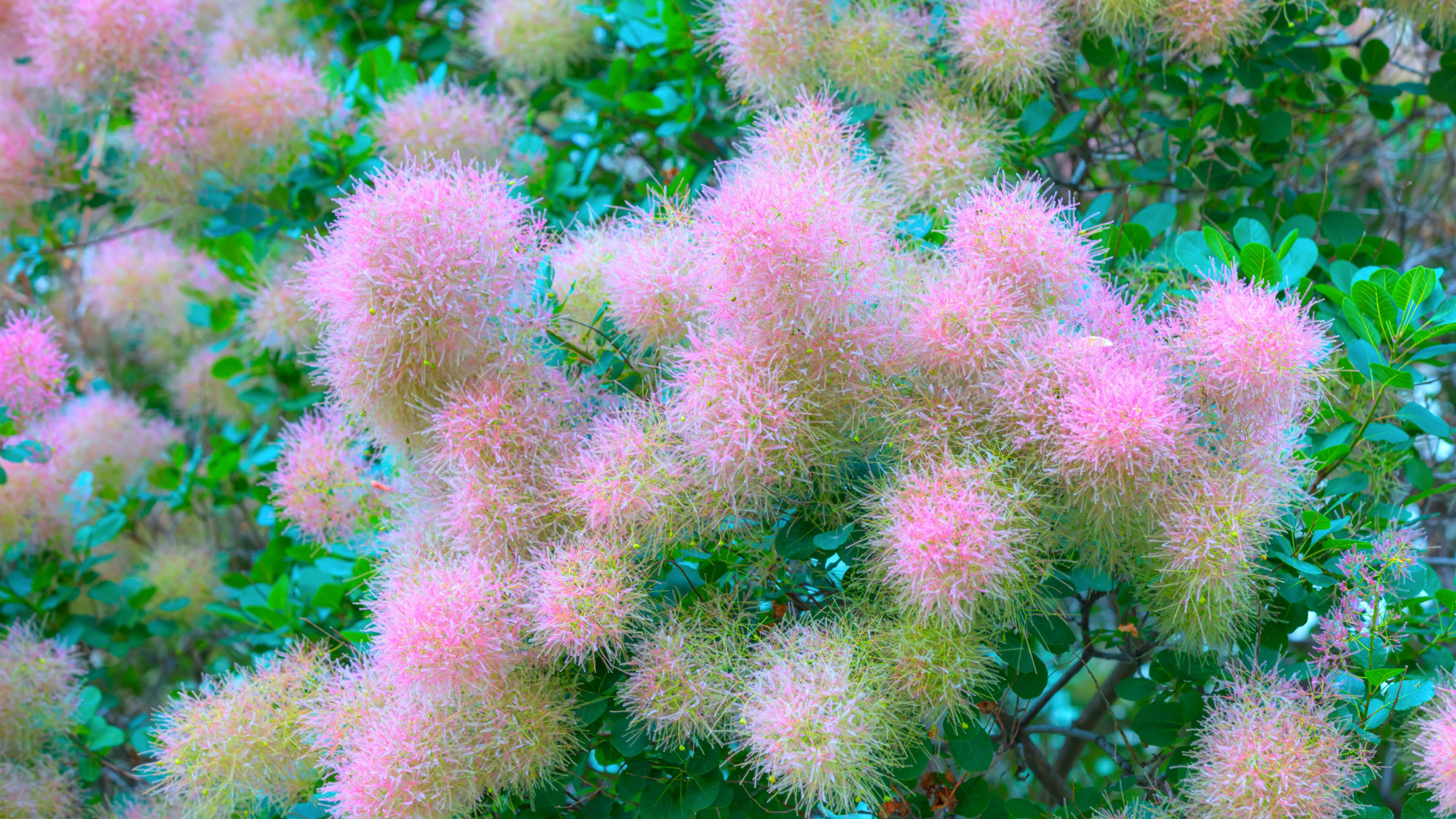

So many different ornamentals are described as unique, and gardening is filled with examples of stunning foliage and flowering potential. But the blooms of the American smoke tree (Cotinus obovatus) are unlike any other unique flowers out there – this tree is truly one of a kind. And for anyone looking for a tree that stands out across different seasons, the staggering beauty of this one is not restricted to flowering.
The florescence (the process of flowering) on the American smoke tree (also known as the American smoke bush, American smokewood or chittamwood) is undeniably breathtaking. The effect appears otherworldly, as it really looks like the leaves of the tree are laced in plumes of smoke, in wafts of pink and purple. It’s the wispy, string‑like panicles that create this impression – the flowers are small and yellow. But the smoke effect is extremely ornamental, and it can last most of the summer.
Beyond the summertime haze, this distinctive native earns its keep with fiery fall foliage and low‑input toughness. It slots beautifully into sunny, well‑drained sites, where you want a showy specimen in a native garden without needing to fuss over it. There is just one caveat with these gorgeous trees – you need to give them drainage, as they struggle with chronically wet spots. Find out how easy and enjoyable it is to grow your own enigmatic and unforgettable American smoke tree.
Quick Tree Facts
Botanical Name | Cotinus obovatus |
Type | Deciduous large shrub, small tree |
Height | 20-30 feet (6-9m) |
Spread | 20-30 feet (6-9m) |
Light | Full sun ideal, partial sun possible |
Soil | Well‑drained, but tolerates poor, rocky and alkaline soils |
Hardiness Zones | USDA zones 4-8 (Not in the US? Convert your zone) |
Flowers | Summer |
Native Range | Kentucky, Tennessee, northern Alabama west to Oklahoma |
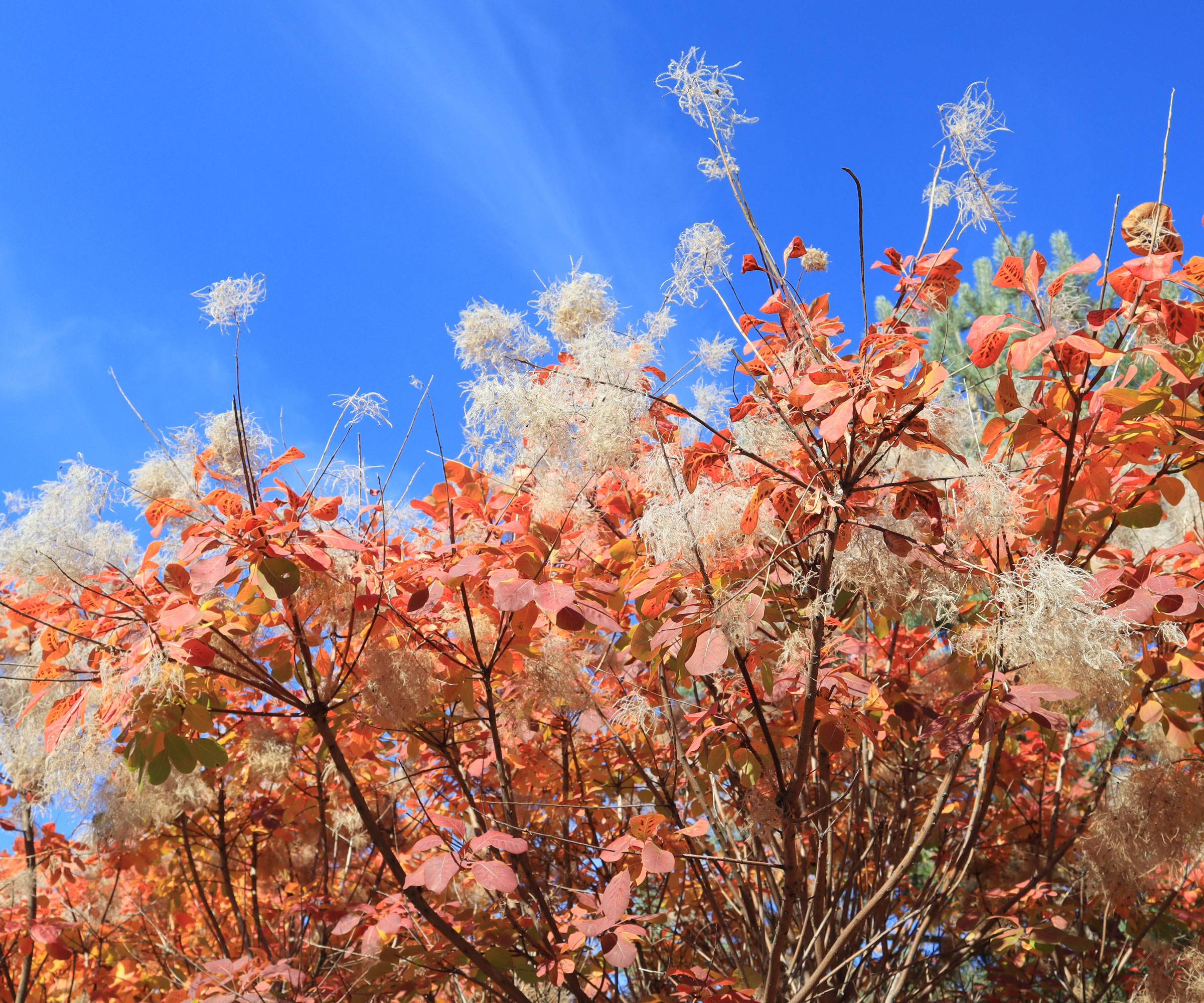
Planting American Smoke Trees
Planting American smoke trees involves an assessment of your USDA hardiness zone, soil conditions, and space. You will be blessed with great focal variety, depending on the time of year, from soft pink or purple airy summer ‘smoke’ to striking fall tones of gold, orange, red and burgundy. So before choosing your tree and planting it out, give some thought to other trees in your yard, as well as the condition of your planting site. If possible, test your soil before planting with a soil meter like the Raintrip 4-in-1 Soil Meter from Amazon, which can help you assess moisture levels and nutrient load as well as soil pH.
Plant your American smoke tree (aka American smoketree, depending on where you source it) in spring or fall. In cold regions, spring planting lets roots settle before winter. In warmer regions, fall planting rides cooler weather. Plan for a mature spread of 20-30 feet (6-9m) to get the best out of growing and caring for these trees. Give your tree breathing room from foundations and overhead wires. Also, keep it out of low, soggy pockets – this is a drainage‑first tree.
Soil Needs
American smoke trees aren’t too fussy when it comes to soil requirements. The only real deal-breaker is drainage – as long as the soil drains well, these gorgeous four-season trees are happy. They can’t stand waterlogged soils, so just try to avoid this. It’s fine for soils to be sandy, rocky, even a little clay-based – within reason, as long as drainage is possible.
If you garden in heavy clay, improve the soil structure with some aged organic matter and plant slightly high so the water sheds away. These trees favor a soil pH that is a little on the alkaline side, and are in their element in rock gardens, dry slopes and meadow-style plantings. You can add a little garden lime, like True Organic’s Garden Lime from Amazon, to raise alkalinity levels to a more desirable level.
Sign up for the Gardening Know How newsletter today and receive a free copy of our e-book "How to Grow Delicious Tomatoes".
Light and Warmth
These trees need sun, and the more the better. I have seen smoke trees thriving with modest morning sun in bright urban courtyards. For best plume and fall color, though, you need to aim for full sun – this means 6 hours or more each day. If you are thinking of growing your American smoke tree in part sun, 4-6 hours of daily sunshine is acceptable if you’re willing to wind up with fewer smoke puffs!
Exposure to full sunshine will give you the strongest foliage tones in the fall and the most impactful and generous flowering smoke effects in summer. Smoke trees are open and airy, so it’s also important to allow 12-15 feet (3.6-4.5m) space around the tree to allow for continuing access to unfettered light and to moderate airflow.
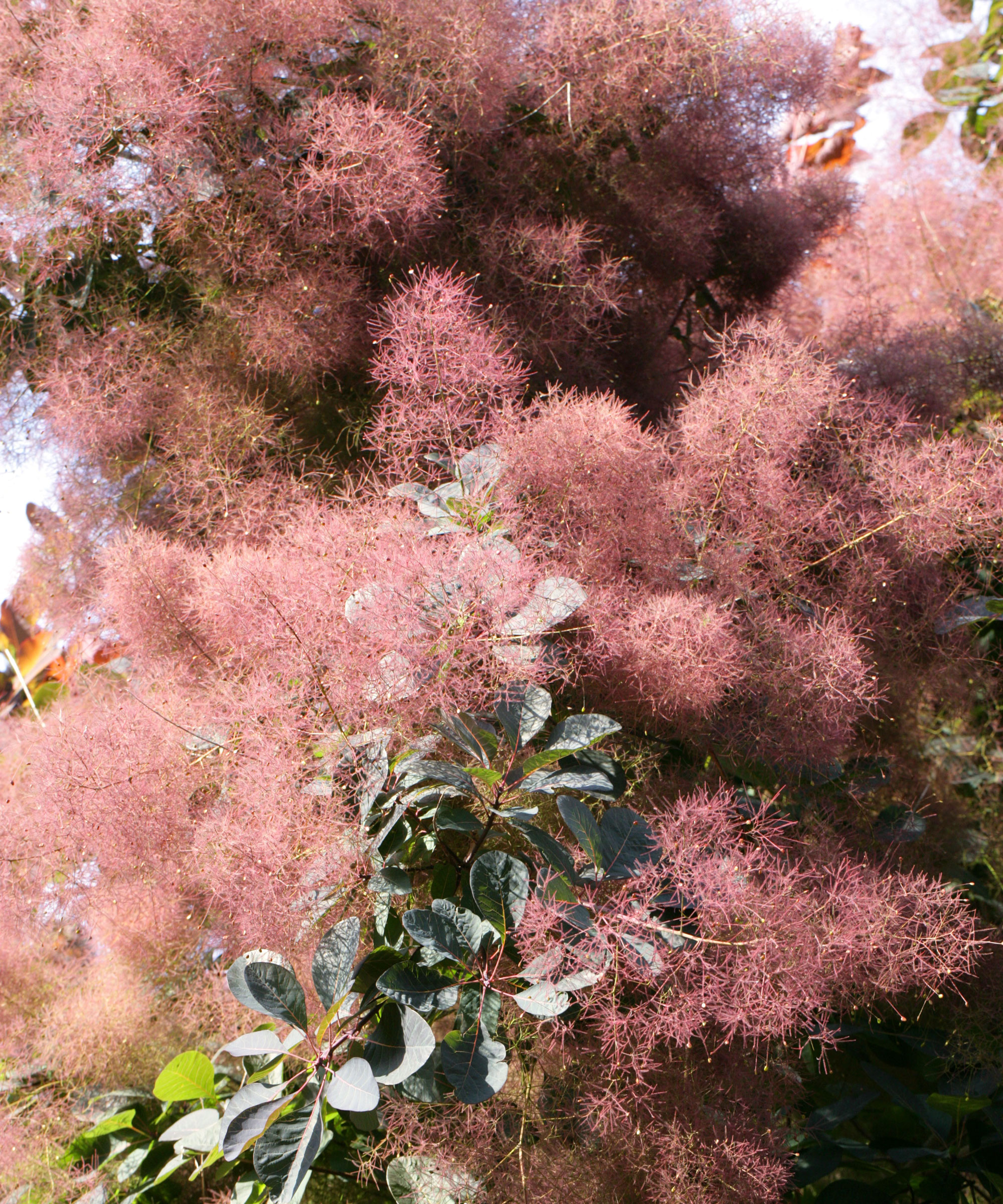
Planting Step by Step
Having prepped your planting site and checked soil drainage is adequate, the process of planting your tree should be relatively straightforward:
- Dig a hole that is 2-3 times as wide as the root ball. Mix a little aged organic matter into the hole, but don’t be tempted to overdo it, as American smoke trees prefer slightly lean soil.
- Dust the tree roots with a little sprinkling of mycorrhizal fungi before planting into the ground. An organic root enhancer like Smart Grower’s Micorrhizal Fungi from Amazon is a reliable way to bolster root growth.
- Set the crown level with or just above the surrounding soil. Backfill with some of the native soil you dug out for the hole and tamp gently. Fill the hole halfway, water to settle, then finish backfilling.
- If you are planting in a site that has exposure to winds, it’s a good idea to add a stake to support the tree until it is strong enough to support itself. Use the DeWitt RS15 Tree Stake Kit from Amazon to help promote upright growth and stability in newly planted trees.
American smoke trees have a shallow, fibrous root system. This is handy if you need to shift your young plant to a sunnier spot, for instance. As long as you don’t do this too frequently, it is fine to transplant the tree inside the first few years, should you decide there is a better place to grow your tree.
Care for American Smoke Trees
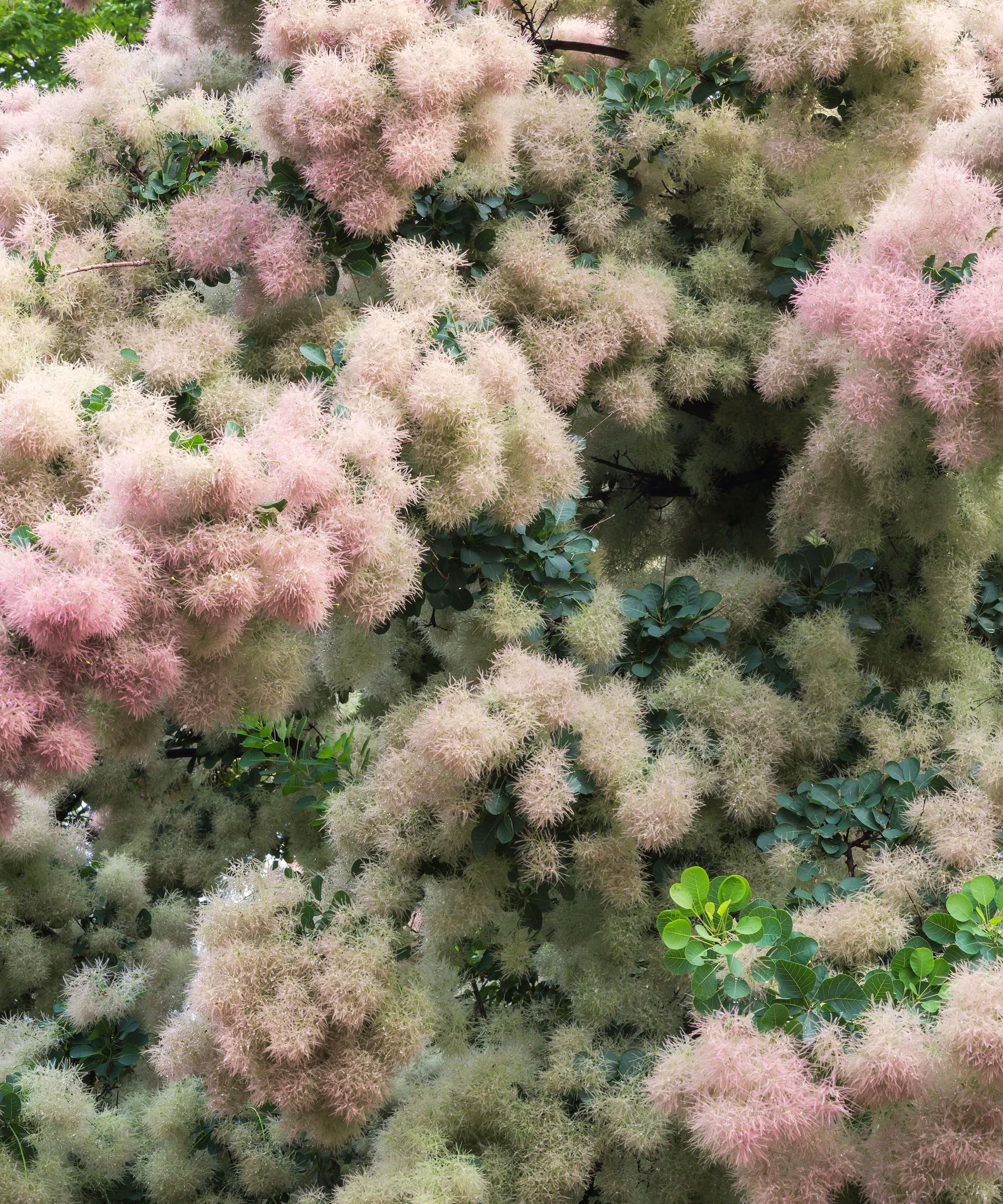
Once planted, American smoke trees are very low-maintenance flowering trees – as long as you have ensured that they are in well draining soil and are receiving plenty of sunshine. You can remove stakes within a couple of years, once you are sure they are supporting themselves. Where these needs are met, just keep an eye on the following.
- Watering: Adult smoke trees are drought tolerant. However, young trees require moist soil to establish a strong root system. Water newly transplanted trees several times a week for the first few months. After the first season, you only have to water deeply during extended dry spells in the growing season. In terms of the best times to water, you can skip the rigid ‘every two weeks’ requirement used for other ornamentals, and watch the weather instead. This is a tough plant once mature, and doesn’t appreciate pampering.
- Fertilizing: In the tradition of many tough plants, the American smoke tree can thrive without fertilizer. Once established, the tree prefers a less lush, leaner soil, and seems content in dry or rocky terrains with little obvious fertility. Over-fertility can reduce autumnal color and increase the risk of disease. If you have to give your newly planted tree a little boost in the first year of growth, try a very light application of Espoma Organic Tree-Tone, available from Amazon, once in early spring. This will support root development during the first few seasons.
- Mulching: Your tree will benefit from an occasional mulch of organic compost, aged manure or bark-based material to thrive. If growth seems slow in lean soil, a light spring topdress is plenty. Maintain a 2-3 inch (5-8cm) ring of mulch around your tree, but make sure it is 12-18 inches (30-45cm) from the trunk. If you wish to use an organic bark-based option, go for the highly rated Back to the Roots Organic Mulch with Natural Wood, from Amazon. Doing this will help conserve moisture, moderate root temperature, and reduce weed competition.
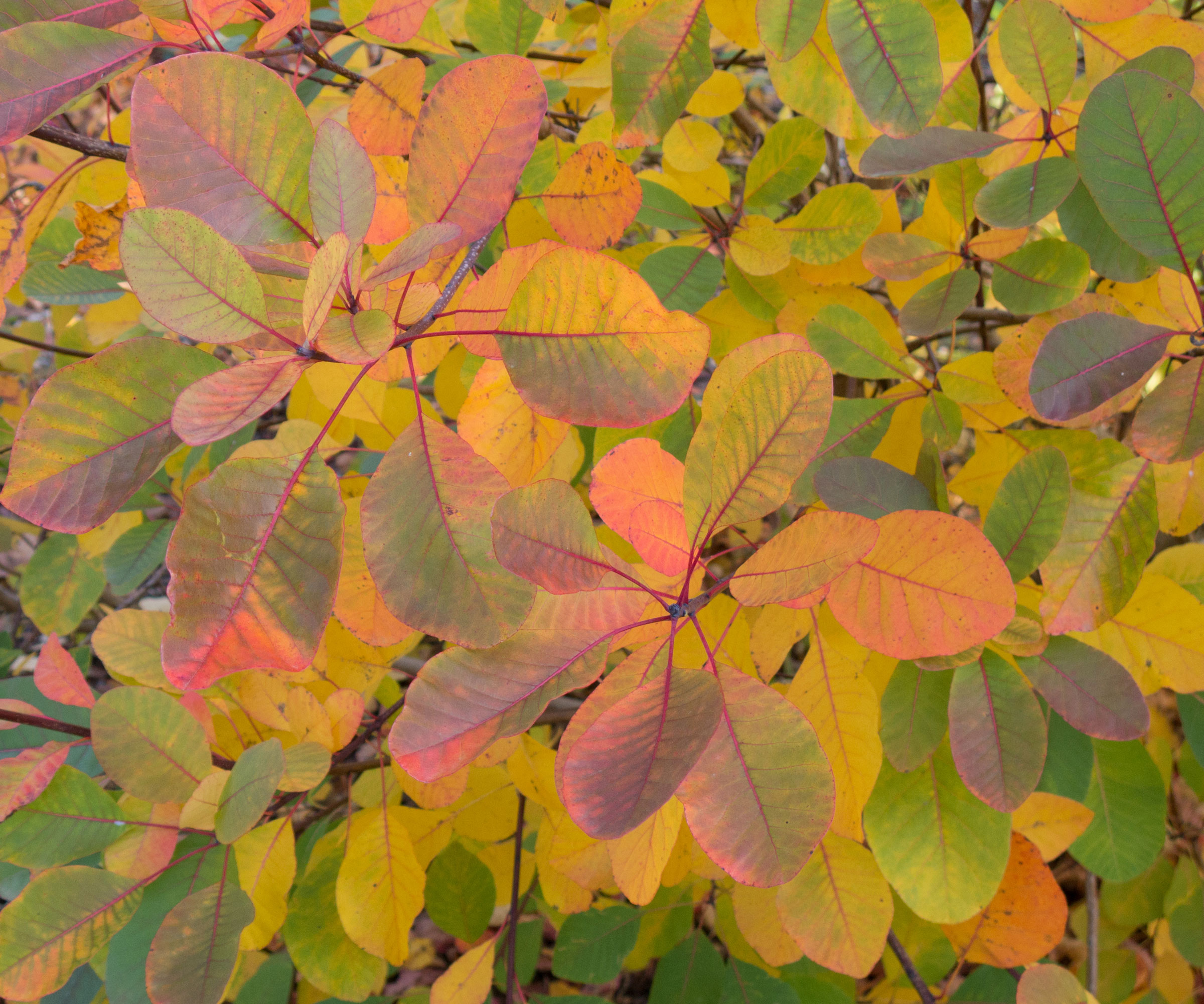
Pruning American Smoke Trees
Pruning an American smoke tree can be relatively low key or it can be regular and focused, depending on your needs, the maturity of the tree, and the time of year. In terms of maintaining a healthy and vigorous shape, you don’t have to routinely commit to cutting back a certain amount each year. In terms of timing, the best time of year to prune is late winter or very early spring, before new growth begins. Don’t make excessive cuts after flowering, as you risk reducing future plumes.
If you are pruning in late winter, unless you are looking to shape the tree, stick to the basics and simply remove dead, damaged or crossing branches to maintain structure. You can also thin interior branches to improve air circulation. If you do want to cultivate a tree form, remove the lower stems each year. To make it look more like a tree, take out all leaders but the central stem. You can prune harder to reduce the size or to rejuvenate, but the natural form is often the most desirable.
Use pruners and loppers for shaping, removing dead or damaged wood, and maintaining a pleasing shape and structure. Fiskars’ 32-Inch PowerGear Tree Loppers from Amazon cut thicker branches with ease, while Corona’s Classic Cut BP3180D Bypass Pruners from Walmart are reliable and efficient with thinner, smaller branches. Clean pruning tools after use to prevent disease transmission.
Great American Smoke Tree Varieties
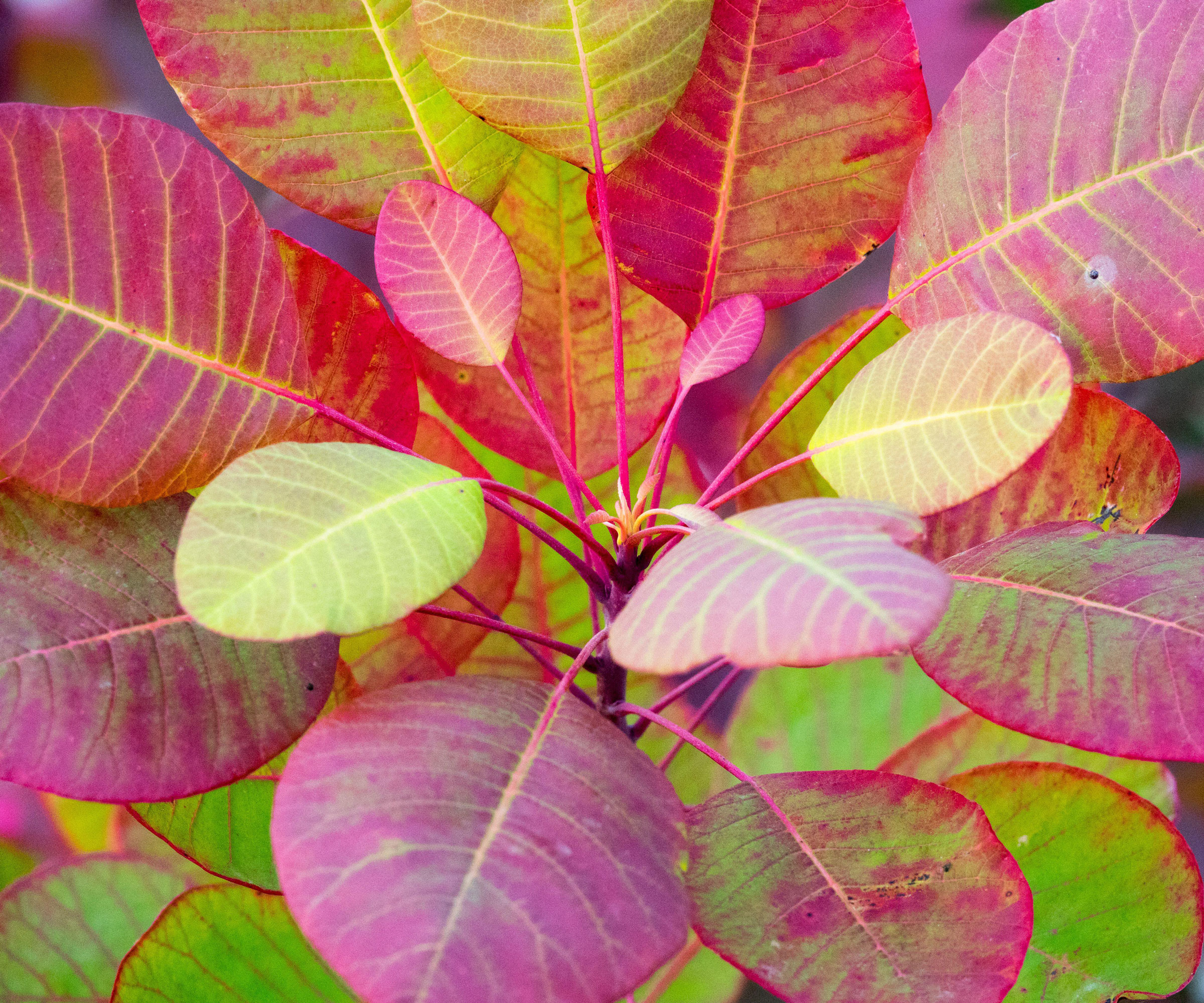
The true species can support native ecosystems, but it has spawned some gorgeous cultivars, several with variations of the distinctive clouds and vivid red fall foliage. When choosing your tree, check the label to ensure you're getting the true species or cultivar you want, especially if native provenance is important to you. Some of the most enchanting and resilient varieties include:
- Northstar: Also known as ‘Cotton Candy’, this tree variety is cold‑hardy to zone 3, with big, pink smoke swirls and potent red‑orange fall tones. It also reaches fairly modest heights of 10-18 feet (3-5.5m).
- Grace: Technically, this is a cross between the Eurasian smoke tree and American C. obovatus. It develops large, pink smoke plumes and flattering contrasting blue-green leaves, as well as vibrant fall foliage.
- Tulsa Lady: Featuring an alluring combination of blueish leaves and fantastical pink seed heads, this compact cultivar originated around Oklahoma. Alongside the sensational summer pinks, you can also enjoy the dazzling russet fall display.
Winter Care for American Smoke Trees
Once your American smoke tree is established, you shouldn’t need to worry too much about winter care. No special measures are required in USDA zones 4-8, beyond a steady mulch layer using organic bark, wood chips, or shredded leaves. It’s definitely worth replacing and replenishing your mulch layer if you suspect that extreme weather may have disturbed or eroded your good work – don’t leave this to chance. Also, make sure you have given your tree a good drink before the first fall frost and before the ground freezes.
In very cold or windy sites, a first‑year American smoke tree will also appreciate a windbreak, from well positioned neighboring shrubs, some temporary fencing, or a screen. It’s also a good idea to wrap the trunk of young trees with some tree wrap or burlap (which can then be removed in spring when conditions warm up again). Try some DeWitt Tree Wrap from Amazon, which is breathable and easy to secure.
Propagating American Smoke Trees
You can propagate American smoke trees via seed or by using cuttings. However, while using seeds for propagation is possible, it can be challenging. Seeds often have low viability, they have a hard seed coat, they may require stratification, and germination can be slow and uneven. Also, the species has fewer cultivars than the European counterpart. For those who are keen to propagate, root cuttings are another option, and often a lot easier for the domestic grower.
This method of propagation will duplicate the parent plant – something which seeds won’t accomplish. The best time to take these cuttings is usually during summer (July or August), using semi-hardwood or softwood cuttings. Take cuttings early in the morning, from healthy, leafy stems. Make softwood cuttings the same length as your hand, remove the lower leaves, then plant the cut end in moist potting soil. You can use rooting hormone if you have any, but I’ve had good results without.
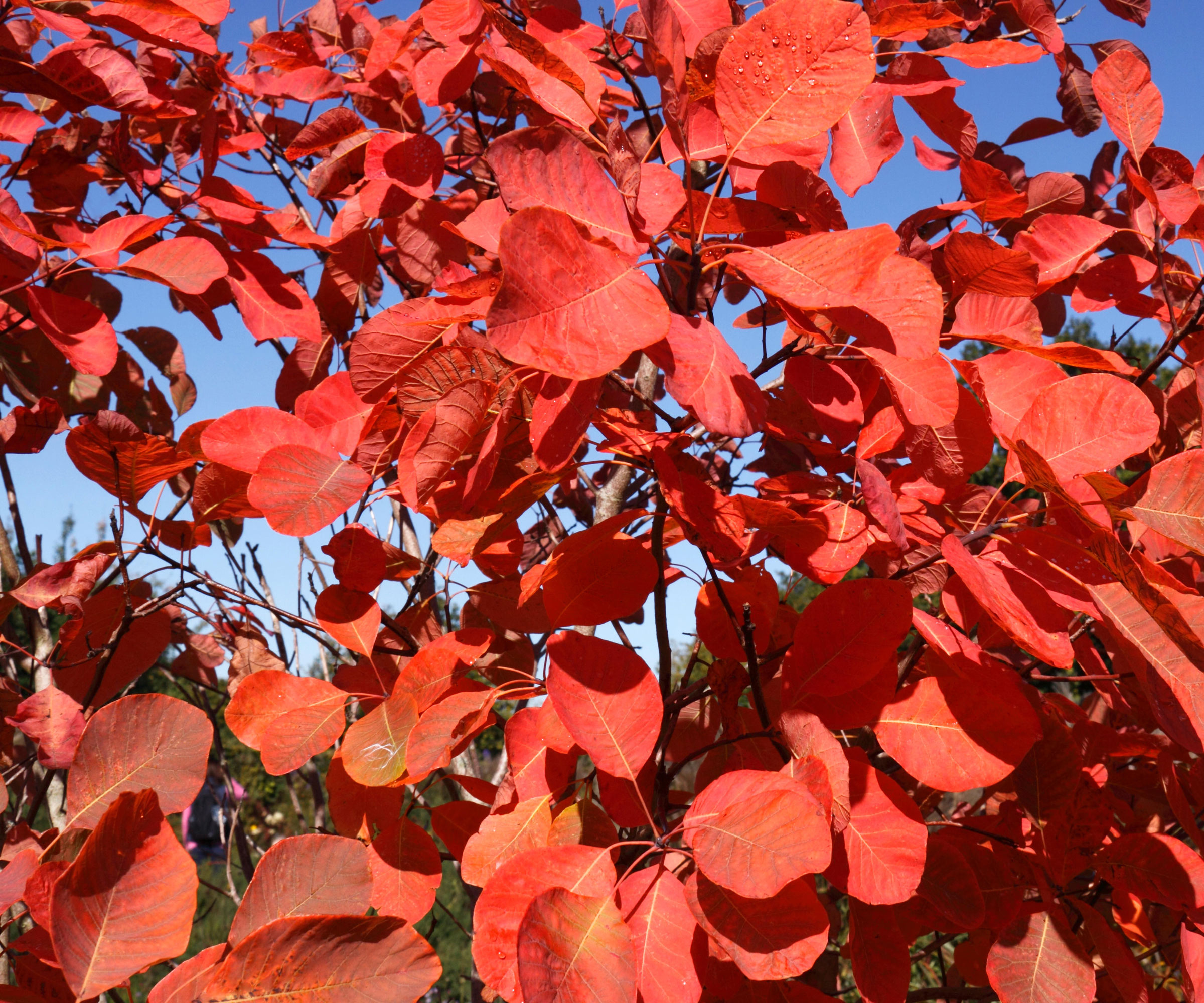
Care Calendar
| Header Cell - Column 0 | Spring | Summer | Fall | Winter |
|---|---|---|---|---|
Plant & Move | ✓ | Row 0 - Cell 2 | Row 0 - Cell 3 | Row 0 - Cell 4 |
Fertilize | ✓ | Row 1 - Cell 2 | Row 1 - Cell 3 | Row 1 - Cell 4 |
Mulch | ✓ | Row 2 - Cell 2 | ✓ | ✓ |
Prune | ✓ | Row 3 - Cell 2 | Row 3 - Cell 3 | ✓ |
Propagate | Row 4 - Cell 1 | ✓ | Row 4 - Cell 3 | Row 4 - Cell 4 |
Common American Smoke Tree Problems
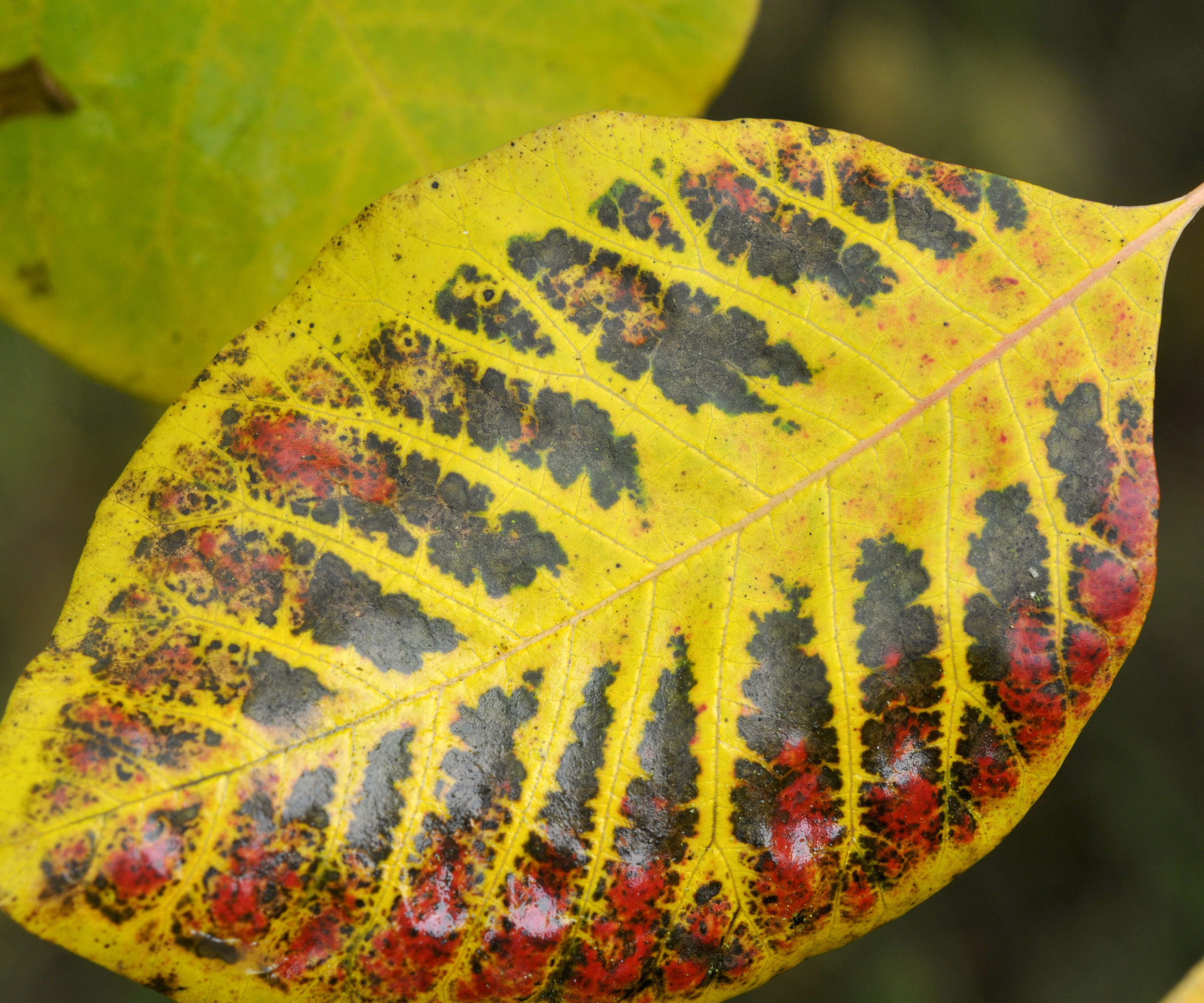
Great news for American smoke tree growers: there are few common tree pests and diseases to worry about. If you have taken adequate steps to plant in a sunny, well-draining spot, you are unlikely to have to worry about fungal issues or rots. American smoke tree leaves may flag up issues such as leaf spot, rust and verticillium wilt, associated with wet conditions, but these are also unlikely to cause trouble – unless other factors are causing excess moisture on or around the plant.
Mulching around the base will prevent splash-back, often associated with fungal issues. Also, if you water correctly, early in the day, there is less chance of a foliar disease. Avoid the temptation to over-water or over-fertilize, and you should be fine. The only pests likely to cause issues are aphids, borers or caterpillars. Treat aphids by introducing beneficial insects such as ladybugs or lacewings, or by using neem oil sprays. Try swift, repeat application of Bonide Captain Jack’s Ready-To-Use Neem Oil Spray from Amazon, which can also help as mild fungal controls.
American Smoke Tree Companions
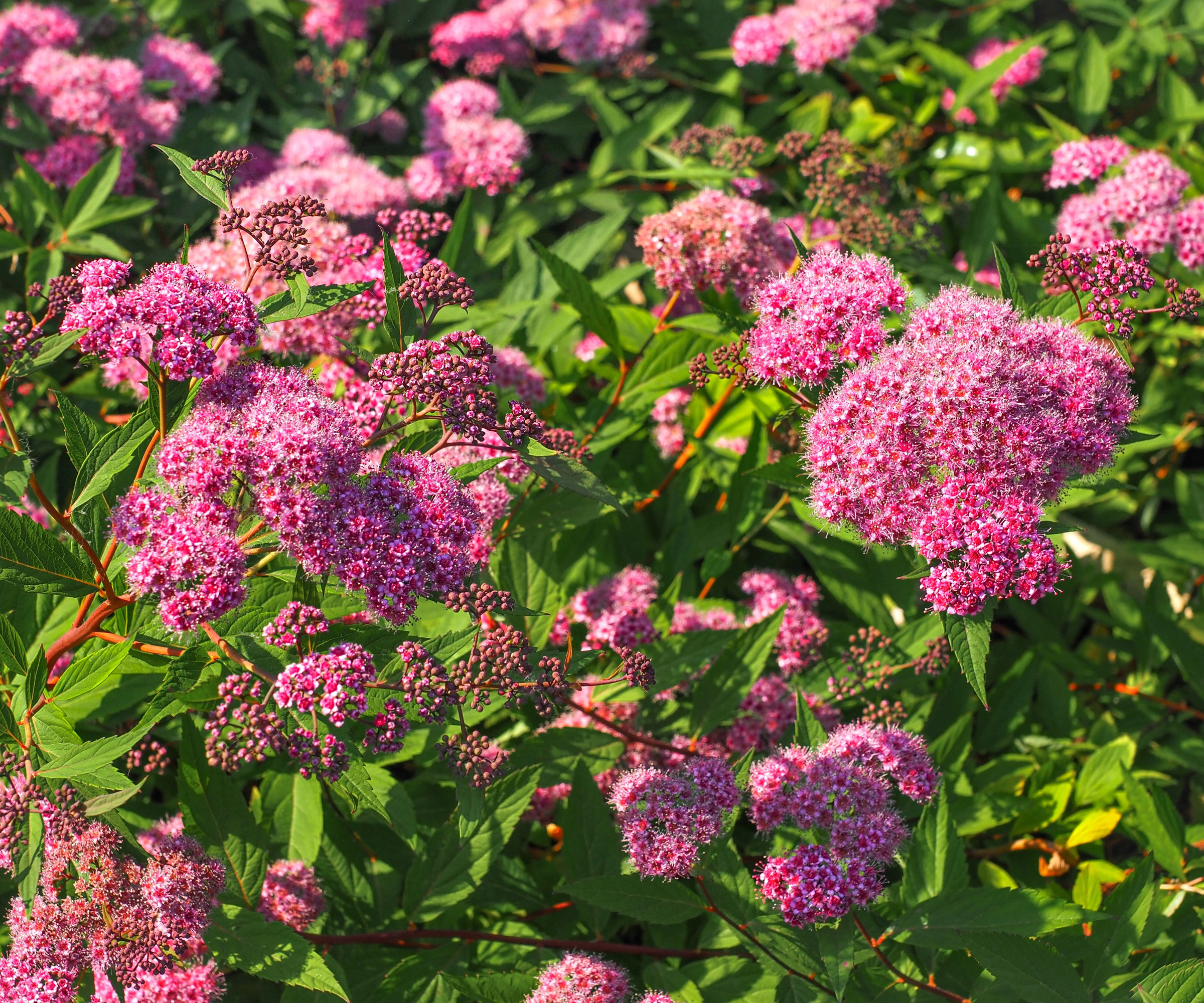
Good companion plants for American smoke trees include plants with contrasting colors (such as dark foliage or silvery notes), plus the same growing requirements of full sunlight and well draining soil, such as Mediterranean herbs such as lavender and ornamental grasses, which also provide pleasing visual contrasts because of their arching, flexible plumes. Highly suitable planting companions include:
- English Lavender: This popular lavender type (Lavandula angustifolia) loves the same dry, sunny, well-drained conditions. Its soft purple flowers echo the smoke tree’s hues and its aromatic oils repel deer, aphids, and some fungal issues.
- Leadplant: This nitrogen-fixing shrub (Amorpha canescens) provides gorgeous silvery foliage and purple flower spikes, plus it attracts bees and butterflies, and increases resilience in a native planting scheme.
- Spirea: Steeplebush (S. tomentosa) or meadowsweet (S. alba) appreciate the same conditions, and their blooms echo the smoke tree’s inflorescences for a soft and layered look. Dense branching also offers habitat for beneficial insects.
- Little Bluestem: This native grass (Schizachyrium scoparium) thrives in dry, sunny soils and adds vertical texture. Blue-green summer blades and reddish-orange fall tones complement the smoke tree’s seasonal palette. Plus, deep roots stabilize soil.
Frequently Asked Questions
What is the difference between a smoke tree and an American smoke tree?
There are two different species of smoke tree: the American smoke tree, also called the American smoketree (Cotinus obovatus) and the European or Eurasian smoke tree (Cotinus coggygria). American smoke trees are native to North America and typically grow larger with a tree shape. They have a large leaf shape with a brighter, richer fall color. European variants tend to be more shrubby in their growth habit. .
Could you grow the American smoke tree in a container?
You could grow an American smoke tree in a large tub for a few years, but this is a 20-30 foot (6-9m) woody plant. As well as potential growth implications, special care is needed to select a container with ample draining. Inadequate drainage opens up this tree to the possibility of fungal issues, rots and verticillium wilt. For long‑term container interest, gardeners usually turn to dwarf Eurasian smoke tree cultivars.
American Smoke Tree Quiz
American Smoke Tree Care Essentials
- When planting your American smoke tree, dust the tree roots with an organic root enhancer – Smart Grower’s Micorrhizal Fungi from Amazon is a reliable way to encourage root growth and so helps trees to establish that bit quicker.
- Add a stake at the time of planting to help support the tree until it is strong enough to support itself. The DeWitt RS15 Tree Stake Kit from Amazon will help promote upright growth and stability in newly planted American smoke trees.
- Give your newly planted tree a little boost in the first couple of years with a light application of Espoma Organic Tree-Tone, available from Amazon, in early spring. This will help support root development during the first few seasons.
- Protect tree growth with regular top-ups of mulch such as Back to the Roots Organic Mulch with Natural Wood, available from Amazon to regulate moisture levels, suppress weeds, keep roots cool, and help to reduce the risk of disease.
Need more ideas for timely gardening jobs and seasonal expert advice delivered straight to your inbox? Sign up for the free Gardening Know How Newsletter!
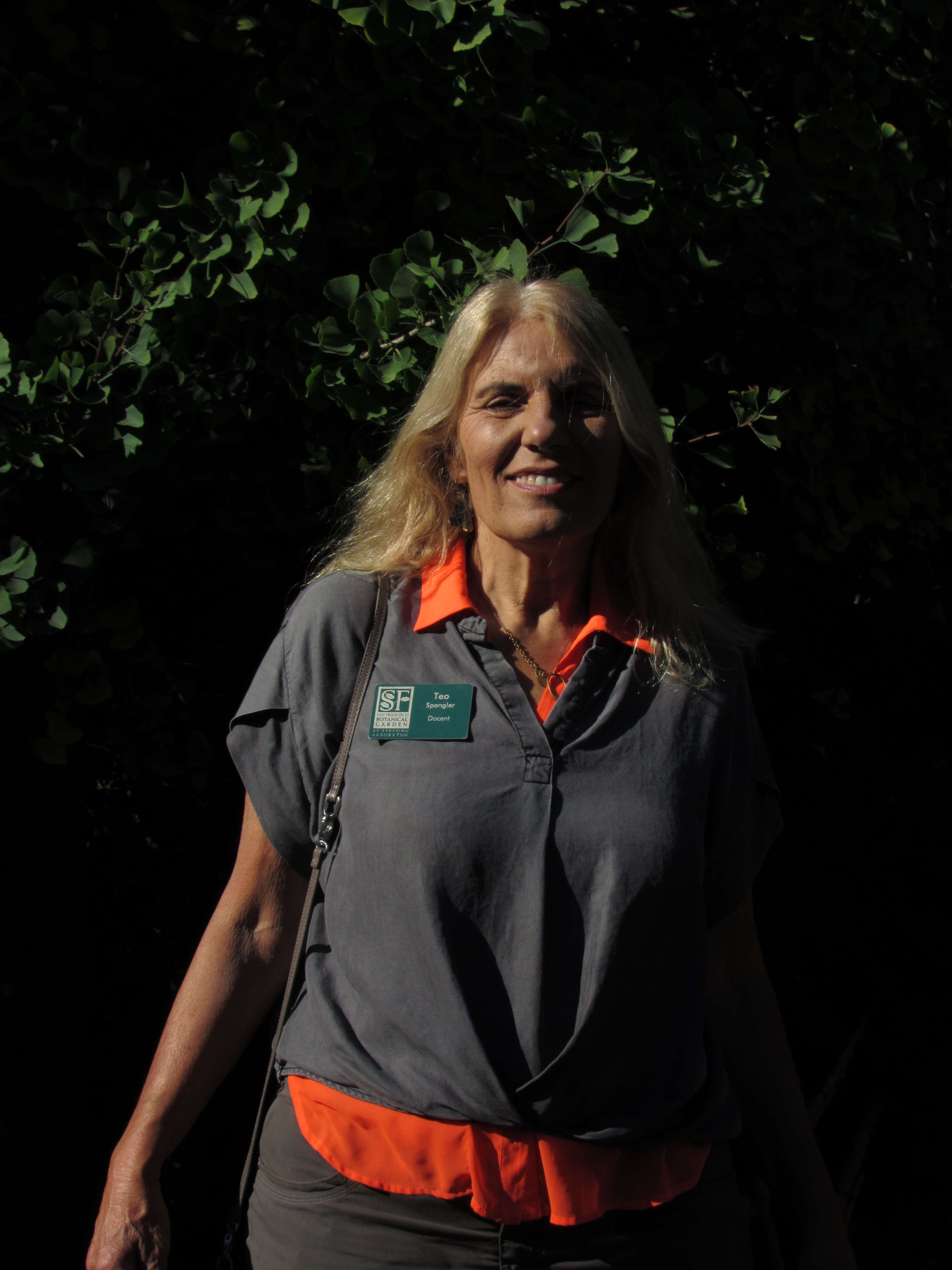
Teo Spengler is a master gardener and a docent at the San Francisco Botanical Garden, where she hosts public tours. She has studied horticulture and written about nature, trees, plants, and gardening for more than two decades, following a career as an attorney and legal writer. Her extended family includes some 30 houseplants and hundreds of outdoor plants, including 250 trees, which are her main passion. Spengler currently splits her life between San Francisco and the French Basque Country, though she was raised in Alaska, giving her experience of gardening in a range of climates.